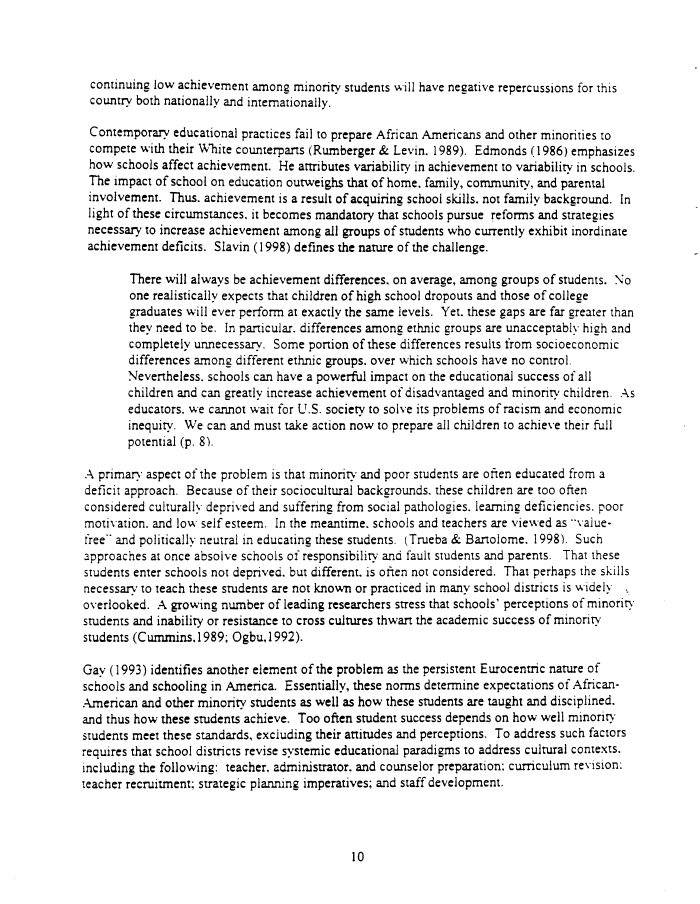 |
||||
|
TASK FORCE TO STUDY THE HISTORY AND LEGACY OF SLAVERY IN MARYLAND (Final Report) 1999/12/31 MdHR 991422 MdHR 991422, Image No: 189 Print image (91K) |
 |
||||
|
TASK FORCE TO STUDY THE HISTORY AND LEGACY OF SLAVERY IN MARYLAND (Final Report) 1999/12/31 MdHR 991422 MdHR 991422, Image No: 189 Print image (91K) |
| continuing low achievement among minority students will have negative repercussions for this country both nationally and internationally. Contemporary educational practices fail to prepare African Americans and other minorities to compete with their White counterparts (Rumberger &. Levin. 1989). Edmonds (1986) emphasizes how schools affect achievement. He attributes variability in achievement to variability- in schools. The impact of school on education outweighs that of home, family, community, and parental involvement. Thus, achievement is a result of acquiring school skills, not family background. In light of these circumstances, it becomes mandatory that schools pursue reforms and strategies necessary to increase achievement among all groups of students who currently exhibit inordinate achievement deficits. Slavin (1998) defines the nature of the challenge. There will always be achievement differences, on average, among groups of students. No one realistically expects that children of high school dropouts and those of college graduates will ever perform at exactly the same levels. Yet. these gaps are far greater than they need to be. In particular, differences among ethnic groups are unaccepiably high and completely unnecessary. Some portion of these differences results from socioeconomic differences among different ethnic groups, over which schools have no control. Nevertheless, schools can have a powerful impact on the educational success of all children and can greatly increase achievement of disadvamaged and minority children. As educators, we cannot wait for U.S. society to solve its problems of racism and economic inequity. We can and must take action now to prepare all children to achieve their full potential (p. 8). A primary aspect of the problem is that minority and poor students are often educated from a deficit approach. Because of their sociocultural backgrounds, these children are too often considered culturally deprived and suffering from social pathologies, learning deficiencies, poor motivation, and low self esteem. In the meantime, schools and teachers are viewed as "value-free" and politically neutral in educating these students. (Trueba & Banoiome. 1998). Such approaches at once absolve schools of responsibility and fault students and parents. Thai these students enter schools not deprived, but different, is often not considered. That perhaps the skills necessary' to teach these students are not known or practiced in many school districts is widely , overlooked. A growing number of leading researchers stress that schools' perceptions of minoriry students and inability or resistance to cross cultures thwart the academic success of minoriry students (Cummins, 1989; Ogbu,1992). Gay (1993) identifies another element of the problem as the persistent Eurocentric nature of schools and schooling in America. Essentially, these norms determine expectations of African-American and other minority students as well as how these students are taught and disciplined, and thus how these students achieve. Too often student success depends on how well minoriry students meet these standards, excluding their attitudes and perceptions. To address such factors requires that school districts revise systemic educational paradigms to address cultural contexts, including the following: teacher, administrator, and counselor preparation; curriculum revision: teacher recruitment; strategic planning imperatives; and staff development. 10 |